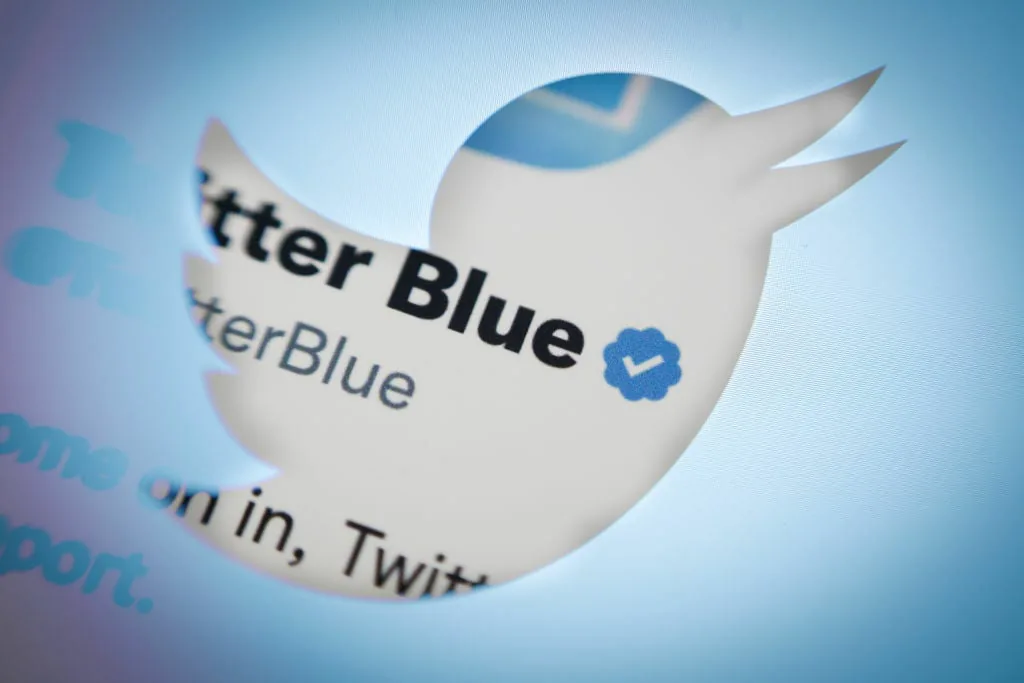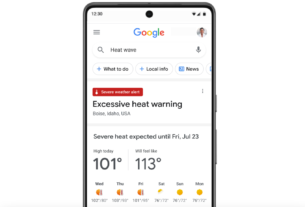Welcome to our blog post on “How to Tell If a Twitter Verified Account is Actually ‘Legacy’ or Paid For”. In recent years, Twitter has become a vital tool for individuals and businesses to connect with their audience, build their brand, and share their message with the world. However, with the rise of fake accounts and paid promotions, it can be challenging to know if a Twitter verified account is legitimate or not. In this post, we will explore the various ways to distinguish between ‘legacy’ verified accounts and those that have been paid for, providing you with the knowledge to make informed decisions when engaging with Twitter accounts. Let’s dive in!
What is a verified Twitter account?
Twitter verification is the process of authenticating a user’s identity to ensure their account is legitimate. A verified account is one that has been confirmed by Twitter as being authentic, notable, and active. Verified accounts feature a blue checkmark next to the user’s name and are often associated with public figures, celebrities, and brands.
The Difference Between Verified Accounts and Legacy Accounts
Verified accounts are not the same as legacy accounts. A legacy account is one that was created before the verification process was implemented by Twitter. These accounts may have a high follower count, but they have not gone through the verification process. It is important to note that having a legacy account does not automatically make it a verified account.
The Process of Getting Verified on Twitter
To become verified on Twitter, users must submit an application to Twitter. The application process requires that users provide proof of identity, as well as evidence of their notable status. Twitter will review the application and determine whether or not the user meets their criteria for verification.
Signs that an Account Might Be a Paid Verification
While it is possible to earn a verified account through the legitimate verification process, some users may attempt to purchase a verified account. Signs that an account might be a paid verification include sudden spikes in followers or activity, a lack of engagement with followers, and a low level of content creation. Additionally, some users may claim to have connections with Twitter insiders, promising to get accounts verified for a fee.
The Potential Consequences of Buying a Verified Account
Purchasing a verified account can have serious consequences. Not only is it against Twitter’s terms of service, but it can also damage a user’s reputation if they are found out. In addition, if Twitter discovers that an account has been purchased, they may revoke the account’s verification status or even suspend the user’s account entirely.
In conclusion, while having a verified Twitter account can be a valuable tool for public figures and brands, it is important to ensure that the verification is legitimate. Users should be wary of promises of paid verification and should always go through the proper channels to apply for verification.
How to spot a legacy verified account
If you’re an active Twitter user, chances are you’ve come across verified accounts. These accounts have a blue checkmark next to their name, indicating that they are authentic and belong to a public figure, celebrity, or brand. But have you ever heard of “legacy” verified accounts?
A legacy verified account is a Twitter account that was verified before the platform implemented its current verification process. These accounts were verified based on different criteria than what is currently used, and as a result, they may not meet the current standards for verification. In some cases, they may have been verified because they were part of a group or organization that was automatically verified, rather than because of their individual status.
So how can you spot a legacy verified account? One way is to look at the account’s bio and activity. If the account hasn’t tweeted in a long time or has only a few followers, it may be a legacy account. Another telltale sign is if the account was verified before 2017, when Twitter revamped its verification process.
It’s important to distinguish between a legitimate verified account and a legacy one. While a verified account can lend credibility to a user or brand, a legacy verified account may not actually be authentic or trustworthy. In fact, some legacy accounts may have been purchased or obtained through other nefarious means.
Following or engaging with a legacy verified account can also have potential risks. These accounts may be inactive or abandoned, which could lead to phishing attempts or other security breaches. Additionally, if the account is not actually owned or operated by the verified user, the information being shared or promoted may not be accurate or trustworthy.
So what can Twitter do to improve its verification process and prevent the proliferation of legacy accounts? One solution could be to periodically review and re-verify all previously verified accounts to ensure they meet current standards. Twitter could also implement more stringent criteria for verification, such as requiring a certain level of activity, engagement, or influence.
In conclusion, while verified accounts can be a valuable tool for establishing credibility on Twitter, it’s important to be able to distinguish between legitimate and legacy verified accounts. By taking steps to improve its verification process, Twitter can help ensure that verified accounts are truly authentic and trustworthy.
How to spot a paid-for verified account
Twitter’s verified accounts are a sign of prestige and influence on the platform. It’s no secret that many users crave the coveted blue checkmark, but not all verified accounts are created equal. There are two main types of verified accounts: legacy accounts and paid-for accounts.
Legacy accounts are typically given to accounts that have a significant following and are considered to be of public interest. These accounts are verified by Twitter’s staff and are not available for purchase. On the other hand, paid-for accounts are available for purchase and are often used by businesses, celebrities, and influencers to boost their credibility on the platform.
So how can you spot a paid-for verified account? One of the most obvious signs is when the account has a low number of followers but is still verified. This is a tell-tale sign that the account was likely purchased. Another sign is when the account has a large number of followers but has little to no engagement on their tweets.
Paid-for verified accounts can have a negative impact on Twitter’s credibility. It can be frustrating for users who have earned their verification through hard work and dedication to see others simply purchase it. It can also lead to the spread of misinformation and fake news as these accounts may not have the same level of credibility as a true legacy account.
If you come across a suspicious verified account, you can report it to Twitter. Simply go to the account’s profile, click on the three dots, and select “report.” From there, you can select the reason for your report and provide any additional information.
In conclusion, while the blue checkmark may signify credibility and influence on Twitter, not all verified accounts are created equal. Knowing the difference between legacy and paid-for verified accounts and being able to spot the signs of a paid-for account can help preserve Twitter’s credibility and ensure that verified accounts are truly earned.
How to verify if an account is legitimate or not
When it comes to Twitter, the blue verified badge next to a user’s name can signify credibility, authority, and trustworthiness. But not all verified accounts are created equal. Some accounts have earned the verification badge through a rigorous application process, while others have simply paid for it. So, how can you tell if a Twitter verified account is legitimate or not?
Firstly, it’s important to understand the significance of verified accounts. Twitter verifies accounts to help users identify authentic accounts of public interest. This helps users to trust the information being shared by those accounts and enhances their overall experience on the platform. However, not all accounts are eligible for verification and only those that meet Twitter’s criteria are eligible for the badge.
Now, let’s talk about the difference between a legacy account and a paid-for verified account. A legacy account is one that was verified before Twitter introduced its official verification process in 2016. These accounts were manually verified by Twitter staff and were generally reserved for celebrities, politicians, and other high-profile figures.
On the other hand, a paid-for verified account is one that has paid a third-party service to obtain the verification badge. These services claim to have connections at Twitter that allow them to bypass the official verification process. However, buying a verified account is against Twitter’s terms of service and can result in suspension or permanent ban of the account.
So, how can you spot a fake verified account and avoid scams? Firstly, look at the account’s history and engagement. Legitimate verified accounts will usually have a long history of activity on Twitter and a significant number of followers. You can also check for the blue verified badge next to the name, which is a clear indication that the account has been officially verified by Twitter.
Lastly, it’s important to consider the ethical implications of buying a verified Twitter account. Not only is it against Twitter’s terms of service, but it also undermines the credibility of the verification process. It’s important to remember that the blue verified badge is a symbol of authenticity and trustworthiness, and buying it undermines the very essence of what it represents.
In conclusion, verifying a Twitter account is a crucial step in establishing credibility and trust on the platform. While the blue verified badge is an indicator of authenticity, it’s important to understand the difference between a legacy account and a paid-for verified account. By following the tips outlined above, you can verify the legitimacy of a Twitter account and avoid falling victim to scams.
The importance of verifying accounts on Twitter
Twitter verification has become a highly sought-after status symbol on the platform, with users hoping to earn the coveted blue checkmark next to their name. The verification process is designed to authenticate the identity of a user, ensuring that they are who they claim to be. Verified accounts are often associated with high-profile individuals, celebrities, journalists, and public figures.
The process of becoming a verified account on Twitter
Twitter’s verification process is not open to everyone. To be considered for verification, an account must meet certain criteria, including being active for at least six months, having a complete profile with a profile picture and bio, and having a confirmed email address and phone number. Twitter also considers factors such as whether the account is of public interest, and whether it has been impersonated or hacked in the past.
The difference between a legacy verified account and a paid-for verified account
There are two types of verified accounts on Twitter: legacy verified accounts and paid-for verified accounts. Legacy verified accounts are accounts that were verified before Twitter suspended its verification program in 2017. These accounts were verified based on Twitter’s old criteria, which were less stringent than the current criteria. Paid-for verified accounts, on the other hand, are accounts that have been verified through third-party services that charge a fee for verification.
Signs that a verified account may be paid for rather than earned
There are a few signs that a verified account on Twitter may be paid for rather than earned through the official verification process. For example, if an account has a low number of followers, but is verified, it may be a sign that the account was paid for. Additionally, if an account has a large number of followers, but its tweets receive little engagement, it may be a sign that the account has purchased followers.
The impact of paid-for verified accounts on Twitter’s credibility and user trust
The rise of paid-for verified accounts has raised concerns about Twitter’s credibility and user trust. If verified accounts can be bought, it undermines the purpose of verification, which is to authenticate the identity of a user. It also creates an uneven playing field, where some users can pay for the status symbol of verification, while others must earn it through the official process. This can erode user trust in the platform, as users may start to question the authenticity of verified accounts.
In conclusion, while Twitter verification can be a valuable tool for verifying the identity of high-profile users, the rise of paid-for verified accounts has raised concerns about the integrity of the process. It is important for Twitter to maintain the credibility of its verification program by ensuring that verified accounts are earned through a rigorous and transparent process, rather than bought through third-party services.
In conclusion, understanding the difference between “legacy” and paid-for verified accounts on Twitter is crucial for maintaining a trustworthy online presence. While both types of accounts have their merits, it’s important to approach them with a critical eye and evaluate their authenticity before giving them undue credibility. By following the tips and tricks outlined in this post, you can navigate the world of Twitter verification with confidence and make informed decisions about who to trust and engage with on this platform. Remember, a verified badge may indicate status, but it doesn’t necessarily guarantee credibility or legitimacy. Stay vigilant and keep learning to make the most of your online presence.




